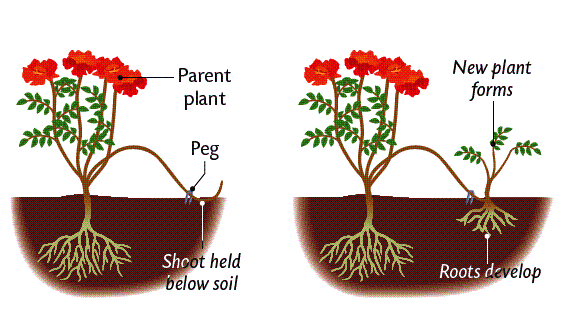Vegetative reproduction is the asexual reproduction in the plants. In this type of reproduction, only one plant part is involved and the new offspring is developed from the one parent only. There are two types of vegetative reproduction, natural and artificial. Many asexual vegetative propagation techniques have been developed by the horticulturists and they use the vegetative plant parts for the replication purpose. The difficulty and success rates of the vegetative propagation vary greatly. By the process of natural vegetative propagation, a new plant is developed from the parts of the single matured plant. The new plant grows and develops without any involvement of human intervention. Adventitious roots are the key factor that helps in the vegetative propagation of the plants. However, in the artificial vegetative propagation, there is direct involvement of human intervention.

Role of Meristem Tissue for Vegetative Propagation
Meristem tissues help in the vegetative propagation of the plants and they are commonly found in the stems and leaves and even in the tips of the stems and the roots. Undifferentiated cells are present in the meristem tissues and they actively divide by the process of mitosis and help the plant to grow. Some specialized and permanent plant tissue systems also originate from the meristem tissues.
Advantages of Vegetative Propagation
There are several advantages, associated with the vegetative reproduction of the plants, and one of the most important ones is that the new offspring is the clone of the parent plant. The favorable traits of the plants can be passed down to the new plants. Vegetative propagation of the plants is economically beneficial for the commercial growers for cloning of the certain plants, to ensure their consistency. Additionally, this process is not costly, as there is no involvement of the flowers and subsequent seeds and fruits. In this type of reproduction, plants are allowed to reach the mature phase at a faster rate. It also offers the dimensions of research in various areas of biology and has practical uses for the afforestation.
Disadvantages of Vegetative Propagation
One of the main disadvantages of vegetative propagation is that it does not offer genetic diversity and severe reductions in the crop yields can be observed. The genetic makeup of the plants is identical and therefore they will be susceptible to the same kind of diseases and environmental stresses and the entire crop can be wiped out in a shorter period.